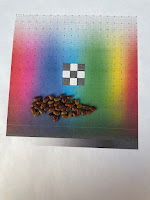Varieties I've collected for my landraces: Part 1 Common Warm season legumes
If you do not know what landrace gardening is, then go to this website Joseph Lofthouse, Author of Landrace Gardening. Joseph Lofthouse is the originator of this current movement, and how I found out about Landrace gardening, which was through a YouTube video. I kinda wish I remembered which one, but I highly recommend going to Joseph's website and then to the YouTube channel.
This post will cover all of the legumes I have collected to make my Landraces. I highly recommend starting with Legumes for a few reasons: you can get tons for cheap, and they are easy to collect varieties for because you pick them based on what the seeds look like.
When I refer to a variety as "bulk," it means I have over a pound of that variety.
Runner beans (Phaseolus coccineus): I think I have a very good collection of runner beans. The first 3 images are from seed packets, and the rest are 1-2 pound bags, 1 bag is grown in America, and the rest are all grown in Mexico, which is the center for biodiversity for runner beans.
From left to right the varieties are 1:bulk scarlet runner, 2: painted lady, 3:sunset, 4: A Grano Bicolore, 5: bulk Royal Corona, 6: bulk Ayocote Morado, 7: bulk Ayocote Negro, 8: bulk Ayocote Pinto
Tepary beans (Phaseolus acutifolius): I would say tepary beans are probably a really good fit for my climate, so I think I have enough; the first three are packets, and 3, 2 pound bags. I'm also happy with the varieties because I got them from the center of biodiversity, the Sonoran desert.
Common bean (Phaseolus vulgaris): The first 9 are 1-2 pound bags, Mexico is a center of diversity of beans and America is close enough, also some of the varieties I have have come directly from Mexico. I also have a good number of dry climate-adapted varieties.













































Comments
Post a Comment